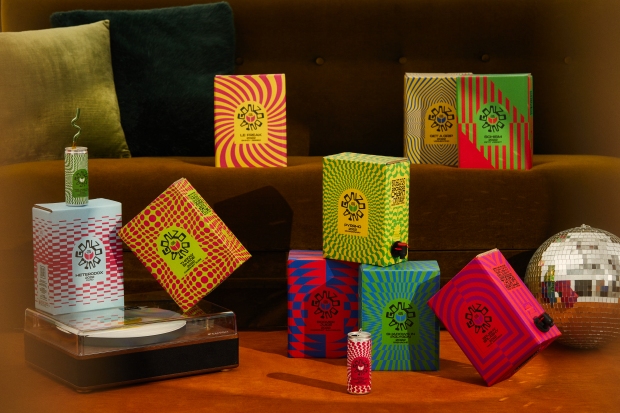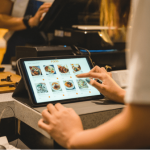Glass bottles have been the vessel of choice for wine for decades. Either closed with cork or screwcap, bottles have been the go-to packaging for winemakers to showcase their most prized drops. The humble boxed wine sits on the other side of the scale.
Affectionately known to most as goon, boxed wine has long held a reputation of being mass-produced and of low-quality. But the format is having a revival thanks to its eco-centric nature.
Hospitality speaks with boxed wine brand Hey Tomorrow along with wineries Gonzo Vino and Koerner Wine about changing perceptions and why boxed products are a sustainable choice for venues and consumers alike.
During a WSET course on wine packaging, Sacha Imrie turned to her partner Shane Barrett and said, “I just can’t believe more people aren’t doing this.” The ‘this’ she was referring to was using ‘bag and box’ to package wines.
Bag and box, boxed or cask wine was invented in South Australia and is largely thought of as a low-quality, bulk product rather than a fine, collector wine. “Cask wine was a victim of its own success,” says Barrett. “It was never invented for cheap wines, but because it ended up being lower cost than a bottle per unit to package, it automatically attracted a lot of cheap wines.”
Imrie and Barrett teamed up with Kelly O’Loghlen, Jesse Gerner and Andrew Fisk to change the narrative of boxed wine with the launch of Hey Tomorrow in 2020. The brand partnered with established wineries including Lethbridge, Syrahmi and Ben Haines to produce a range of boxed red, white and Rosé wines and prove they were just as good as their glass bottle counterparts.
Despite the public image of boxed wine, Hey Tomorrow believe it’s the way forward when it comes to packaging. “There’s a lot of different aspects from the sustainability side of things,” says Barrett. “For example, a lot of glass in Australia doesn’t get recycled at all — you only get about 60–70 per cent conversion depending on the machinery. I think people have this image [that glass recycles well], especially in Australia, because it was the first thing people started to recycle.”
The production process is relatively no frills, with the team travelling to wineries in a van equipped with a filling machine. The bags, or wine bladders, are filled to the point of having almost no oxygen before they are sealed and sent back to the warehouse for distribution.
Hey Tomorrow’s packaging is made from 75 per cent cardboard and 25 per cent plastic, with the cardboard able to be fully recycled through household bins. The wine bladder and tap can be sent back to Hey Tomorrow for free where it is disposed of responsibly by pyrolytic waste company Renergi.
The business has also partnered with Scholle IPN to log the carbon footprint of the products, noting a seven to eight times reduction in co2 emissions throughout the lifecycle compared to glass.
This is mainly due to weight and size when it comes to distribution along with recyclability. “We can easily fit 1,000L of wine in a bag and box onto one pallet, but if we were to fill 1,000L into bottles, you would never fit it onto one pallet because the bottles take up more room,” says Barrett. “A lot of carbon savings come from the logistics of moving the products around.”
Marcus Radny started his alternative packaged wine brand Gonzo Vino Wines in 2018 after questioning the purpose of glass bottles for ready-to-drink wines. “It’s just an incredible waste of carbon, energy, shipping and space,” he says. “There are very few wines on the planet that actually benefit from being in a bottle. What’s the point if it’s just going to get drunk within three or four months of its life?”
Radny sells boxed wines to an array of venues — even those that don’t sell large volumes of wine. “Places where wine might not be the main drawcard don’t want to compromise with cheap options that they might have to tip down the sink at the end of the week,” he says. “So, they buy my wine in casks and get a high-quality product without worrying about it being wasted because they’ve got an eight- or nine-week window to sell it.”
The bag and box design doesn’t allow oxygen into the wine bladder when pouring, which means the wine lasts longer as it does not oxidise. Boxed wines can last several weeks once they have been opened, preventing unnecessary waste. Hey Tomorrow’s wines last for 30 days once a box has been opened, which is longer than wines in bottle. “We’ve been doing larger 5L bags for venues and it’s really good for smaller restaurants because you don’t need the infrastructure for kegs,” says Barrett.
Koerner Wine in South Australia’s Clare Valley has also turned to bag and box, launching the Brothers in a Box collection in 2022. Co-Owner and Winemaker Jono Koerner says the idea came about after discussions about lowering the winery’s carbon footprint were had along with the realisation that younger styles of wine
don’t need to be stored in bottle and aged.
“These are wines that are ready to go and drink straight away — it’s not about cellaring,” he says. “We thought the option to put them in box would be great as there’s no difference whatsoever.”
Brothers in a Box has experienced success in venues since launching last year. “We’ve had some great restaurants pouring out of a box, but some are a little hesitant because they don’t want consumers to think they’re drinking something stupid,” says Koerner. “But if the story of the wine is communicated and the wine gets in the glass, you’re absolutely fine as the product speaks for itself.”
Koerner also notes the impact of the way the wine appears on the menu. “Some venues put sustainably packaged Riesling instead of putting boxed wine,” he says. “It’s the little things that can get people to give it a go.”
While winemakers agree there are sustainability and logistical benefits, there is still a hurdle to overcome — the public’s perception of boxed wine. “One of the hardest things is selling a 3L box of wine for $60 when you can get a 3L box of wine for $10,” says Radny. “It’s an uphill battle when it comes to people’s perception of value and quality inside the boxes. 3L boxes are the equivalent of four bottles, so you’re essentially buying four bottles for $60 that last for eight weeks once you open them.”
Koerner agrees and believes acceptance will come about with education and time. “I think it’s going to be a great thing — it’s just getting over the idea of boxed wine as
being bad,” he says. “As soon as we get over that, I think you’re going to see a lot more of it.”
Bag and box have come a long way since inception, and winemakers are more than ready to usher in a new chapter for the category. The modern consumer is open to education — remember when tap wines debuted? — and is aware of the importance of making sustainable decisions when it comes to their purchases. The ascension of boxed wine from a producer and venue perspective is more than proof there’s a
bright future ahead for the category.
The post The boxed wine boom appeared first on hospitality | Magazine.































